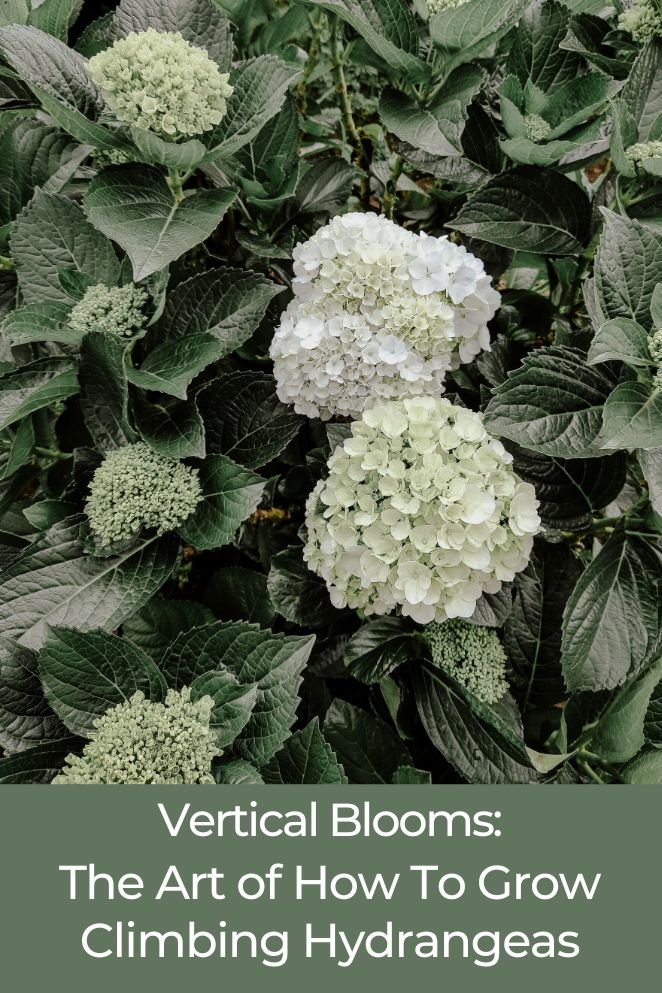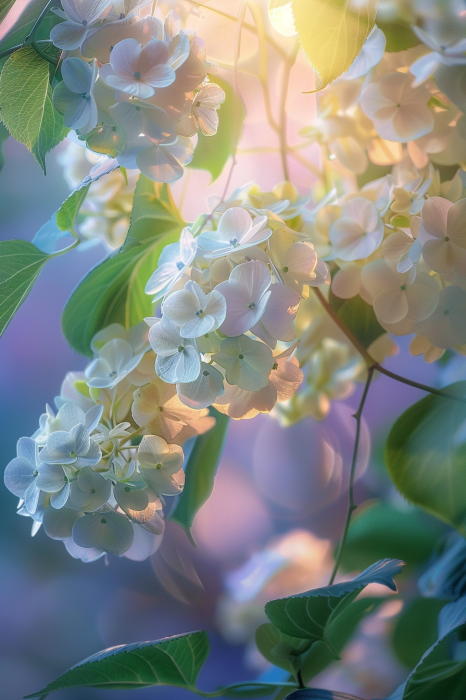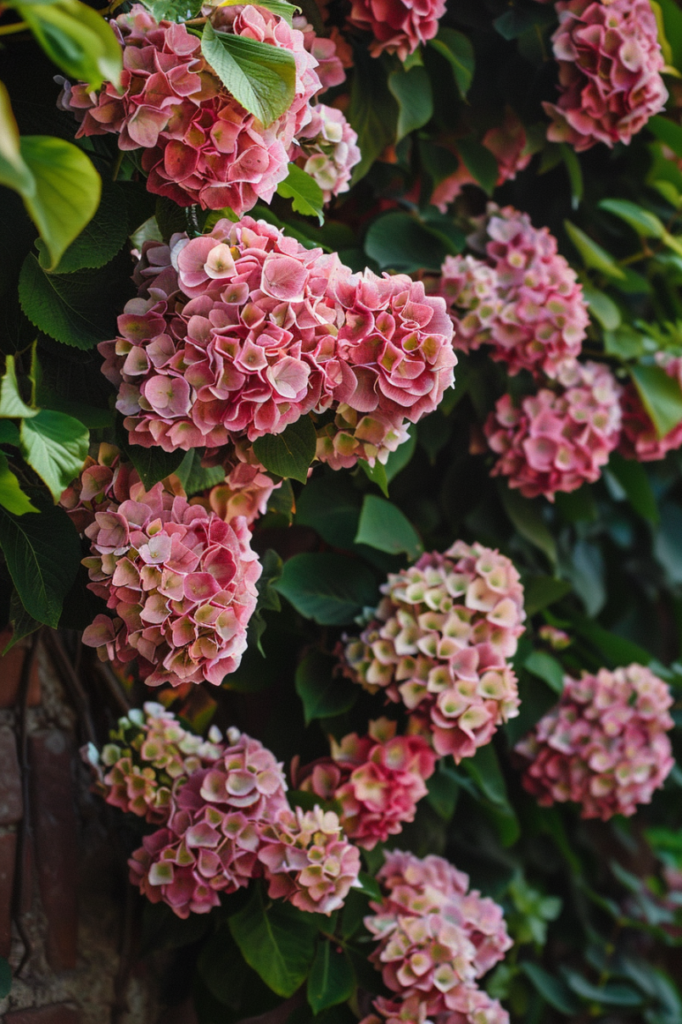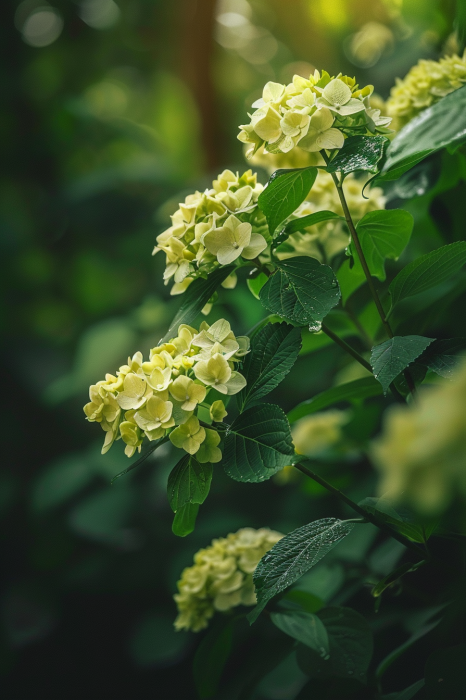
Climbing hydrangeas are a popular choice for home landscaping due to their unique appearance and easy maintenance.
In this blog post, we’ll explore the topic of growing climbing hydrangeas, including different varieties, factors to consider when choosing a variety, and how to grow climbing hydrangeas.
Different Varieties of Climbing Hydrangeas
There are several varieties of climbing hydrangeas available, each with its unique characteristics and requirements. Some popular varieties include:
Climbing Hydrangea
The classic climbing hydrangea is renowned for its widespread popularity.
This variety graces gardens with large, eye-catching flowers that burst into bloom during the summer months.
The sheer beauty of these blossoms adds an enchanting touch to any landscape.
With its robust vines and captivating blooms, the climbing hydrangea is a go-to choice for those seeking an elegant and vibrant climbing plant.
- Read also: A Complete Guide: Tips on How To Grow Redcurrants
- Read also: How to Grow Daphnes: A Guide to Cultivating Beautiful Shrubs
Snowflake Hydrangea
For those enchanted by the allure of white blooms, the Snowflake Hydrangea is a captivating option.
This variety features small, delicate flowers that unfurl in the spring, creating a visually stunning display.
The pure, pristine white of the blossoms brings a sense of purity and freshness to your garden.
Snowflake Hydrangeas are ideal for adding an early burst of elegance to your outdoor space.
Lacecap Hydrangea
The Lacecap Hydrangea stands out with its distinctive flat-topped clusters of small flowers.
Blooming during the summer, these intricate flowers create a lace-like pattern that adds an air of sophistication to the climbing hydrangea family.
The combination of larger sterile flowers surrounding smaller fertile flowers gives the appearance of a delicate, lacy cap, making it a unique and visually appealing choice for garden enthusiasts.
Panpipe Hydrangea
Known for its striking appearance, the Panpipe Hydrangea boasts large, conical flowers that burst forth during the summer.
The cone-shaped clusters create a dramatic and eye-catching focal point in your garden.
The impressive size and structure of the blooms make the Panpipe Hydrangea a standout choice, providing a touch of grandeur to vertical spaces.

Factors to Consider When Choosing a Variety
Selecting the right variety of climbing hydrangea for your garden involves careful consideration of several crucial factors.
Each variety comes with unique characteristics, and aligning them with your specific conditions is essential for successful cultivation.
Here are key factors to ponder:
Climate
Different climbing hydrangea varieties have specific climate preferences.
Some thrive in warmer climates, while others are better suited for cooler temperatures.
Before making a choice, assess the climate of your location and ensure that the selected variety aligns with the prevailing weather conditions.
This ensures that your climbing hydrangea not only survives but thrives in its environment.
Sun exposure
Sunlight requirements vary among climbing hydrangea varieties.
Some flourish in full sun, basking in the direct sunlight for a significant part of the day.
In contrast, others prefer partial shade, thriving in conditions where sunlight is filtered or more limited.
Evaluating the sunlight patterns in your garden is crucial to match the chosen variety’s needs, promoting healthy growth and abundant flowering.
Soil type
Climbing hydrangeas exhibit diverse soil preferences.
Some varieties flourish in well-draining soil, while others thrive in consistently moist conditions.
Assess your garden soil’s characteristics, including drainage capabilities, and select a variety that aligns with these conditions.
Providing the right soil type ensures optimal nutrient absorption and root health for your climbing hydrangea.
Growth rate
Consider the growth rate of different climbing hydrangea varieties.
Some plants exhibit rapid growth, quickly covering vertical spaces, while others grow more gradually.
Assess the available space in your garden and your desired timeline for coverage.
If you seek a swift and lush display, a faster-growing variety might be preferable.
Conversely, if you prefer a more controlled growth pace, a slower-growing variety could be a better fit.

How to Grow Climbing Hydrangeas
Cultivating climbing hydrangeas is a rewarding endeavor that can enhance the beauty of your garden.
Follow these comprehensive steps to ensure the healthy growth and flourishing of your climbing hydrangeas:
Choose the right location
Selecting an appropriate location is fundamental to the success of your climbing hydrangeas.
Opt for a spot that offers partial shade, providing protection from intense sunlight.
Additionally, ensure the chosen location has well-draining soil to prevent waterlogged conditions, which can be detrimental to the plant’s health.
This careful selection sets the foundation for a thriving climbing hydrangea.
Plant the hydrangea
Timing is crucial when planting climbing hydrangeas.
Aim to plant them in the spring, after the last frost has passed.
This allows the plant to establish itself during the growing season.
When planting, dig a hole that accommodates the root ball, and ensure the crown is level with the soil surface.
Gently water the plant after planting to settle the soil around the roots.
Water regularly
Consistent watering is essential, particularly during the summer months when hydrangeas are actively growing.
Keep the soil consistently moist but not waterlogged.
Deep watering is preferable to encourage the development of a robust root system.
Monitor the soil moisture regularly and adjust your watering routine based on weather conditions and the specific needs of your climbing hydrangea.
Prune the hydrangea
Pruning climbing hydrangeas is beneficial for shaping the plant and encouraging new growth.
Perform pruning in the spring before new growth emerges.
Remove any dead or damaged branches and consider thinning the plant to improve air circulation.
This not only enhances the plant’s appearance but also contributes to overall health.
Fertilize the hydrangea
In the spring, provide your climbing hydrangea with a balanced fertilizer to support healthy growth and vibrant blooms.
Choose a fertilizer with equal proportions of nitrogen, phosphorus, and potassium.
Follow the recommended dosage on the fertilizer label to prevent over-fertilization, which can negatively impact the plant.
Protect the hydrangea
Shield your climbing hydrangea from extreme temperatures and strong winds, especially during the vulnerable stages of growth.
Mulching around the base of the plant helps regulate soil temperature and retain moisture.
Consider installing windbreaks if your garden is prone to gusty winds, ensuring the protection and stability of your climbing hydrangea.

- Read also: How To Grow Epiphyllum Cacti with Success
- Read also: How to Grow Quinces – A Guide to Successful Growth
Conclusion
Climbing hydrangeas are a popular choice for home landscaping due to their unique appearance and easy maintenance.
When growing climbing hydrangeas, consider the different varieties available, factors to consider when choosing a variety, and how to grow climbing hydrangeas.
FAQs
A north or east-facing wall with morning sun and afternoon shade is ideal. Avoid planting near wooden structures due to potential damage from aerial roots.
Consistent watering is crucial, especially during the first year. Mulching around the base helps retain moisture.
Provide a sturdy structure like a trellis, fence, or wall for the vine to climb. Gently guide the stems and use wire or twine for initial training.
Regular pruning in late spring or early summer after flowering encourages blooming and maintains shape. Remove dead, diseased, or crossed branches to promote healthy growth.



